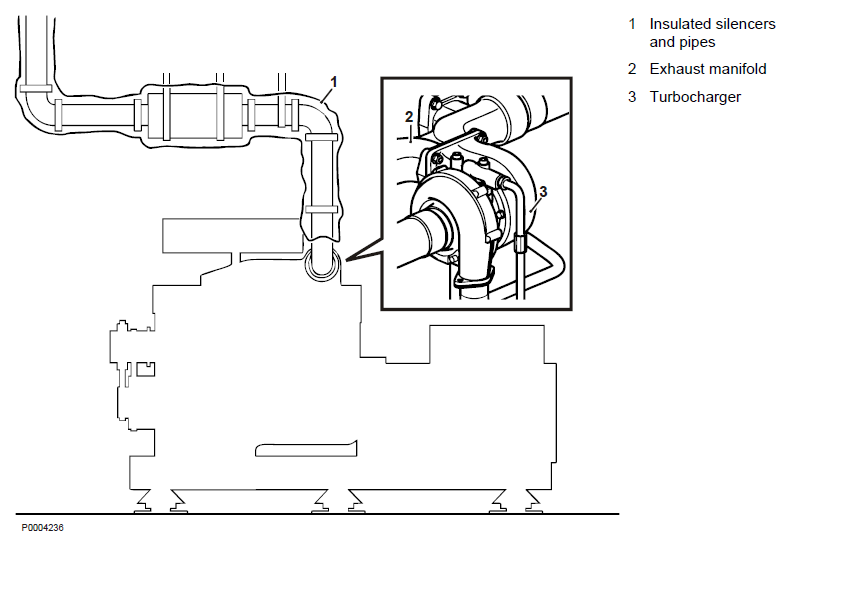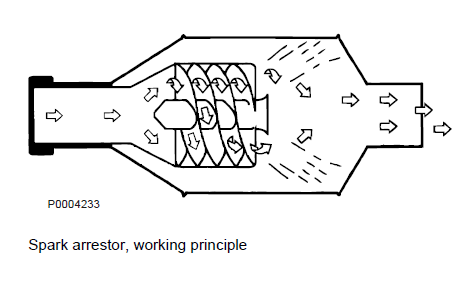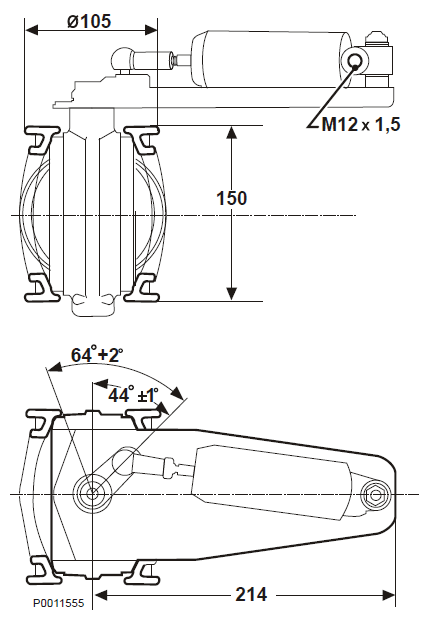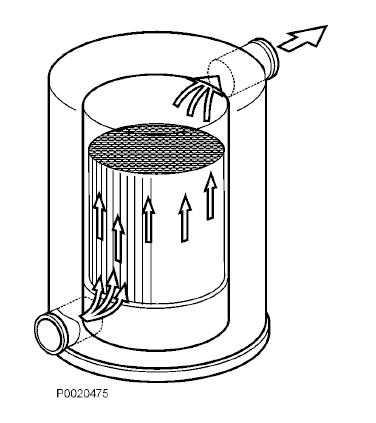Volvo Engine Insulated Exhaust Systems
Insulated exhaust systems
CAUTION!
When engines are delivered without protection all hot surfaces must be protected if it, after being built into the respective applications, is necessary for personal safety. Because of the high temperatures that occur in dry exhaust pipes around 500 – 600 °C (850 – 1030 °F) it is sometimes necessary to insulate them. In this way the temperature in the engine compartment can be kept low and burn injuries through contact can be avoided. The insulation also contributes toward keeping noise levels low. Manifolds and turbochargers may however not be insulated due to the risk of overheating with the destruction of bolted joints and gaskets as the result. Long exhaust lines affect exhaust back pressure negatively and in such cases exhaust pipe diameter must be increased. Check the exhaust back pressure for every installation.

Exhaust outlet location
The exhaust pipe outlet must be designed such that rainwater cannot get into the exhaust system. Install a bend, cover or self-closing cap at the end. The exhaust outlet must be located so that there is no possibility for hot gases to get into the air inlet opening.
NOTICE! The exhaust manifold (2) and turbocharger
(3) may not be insulated owing to the risk of overheating with permanent damage to bolted joints and gaskets as a result.
Spark Arrestor
As a matter of best practice or legislation, spark arrestors are used in certain environments where the risk for fire is great. Spark arrestors limit the release of hot soot particles from the exhaust pipe. The stainless steel spiral causes the exhaust gases to rotate, which throws the hot soot particles against the outer casing where they are cooled before being released; see illustration. The process is similar to that of a turbocharger, where exhaust gases are also thrown against the inside of the turbine housing. Modern turbocharged diesel engines usually have very low particle emissions. The exhaust turbo acts almost like a spark arrestor in that the fast rotation and high temperature of the exhaust gases breaks up the soot particles. The requirement for spark arrestors is reduced on modern diesel engines.

NOTICE! Check the exhaust back pressure when adding parts in the exhaust system.
Exhaust Brake
An exhaust brakes is the cheapest form of extra braking power for road vehicles. It comprises a damper in the exhaust pipe downstream from the turbo. The pressure that builds up in the exhaust gases when the damper is closed brakes the engine through the transmission so that the vehicle slows down.

Important information:
When the brake is activated and the damper is closed, the engine must be at idle. Installation requirements and other dimensions are described in Sales Support Tools, Partner Network.
The illustration shows an exhaust brake with a pneumatic control cylinder.
Exhaust Gas After Treatment
There are a number of devices that can be installed in the exhaust line to reduce exhaust emissions. One common characteristic is that they increase system back pressure significantly, and this must be taken into account when calculating total system back pressure
Catalyzer (oxidator)
The exhaust catalyzer works through the catalytic oxidation of carbon monoxide (CO), hydrocarbons (HC), aldehydes and ketones in the exhaust gases. The catalyzer has no reducing effect on oxides of nitrogen (NOX) from diesel engines owing to the large oxygen content of the exhaust gases. Oxidators also produce particulates mostly from sulfur in the fuel. The cleaning element is normally a platinum-plated matrix located in a cylindrical stainless steel container;
see illustration on the next page in the "Particulate filter" chapter.
The container is installed before the silencer in the exhaust pipe. Because catalyzers are usually more efficient at high temperatures they must be installed as close to the exhaust manifold outlet flange as possible. Exhaust catalyzers are inefficient at exhaust temperatures below 250 °C (482 °F) without additional system solutions. Catalyzers are not recommended for applications that operate with light loads and long idle periods.
Exhaust scrubber
Diesel engine vehicles used underground or in confined spaces usually require a device that cools and cleans exhaust gases. Exhaust gases are led through a special container filled with water where the gases are cooled and their soluble constituents and some odors removed. However, passing exhaust gases through water has little effect on the following gases:
Carbon monoxide CO
Carbon dioxide CO2
Nitric oxide NO
Nitrogen dioxide NO2
The gases that exit the scrubber are therefore still toxic and the driver must be made aware of the danger of operating an engine in a confined space.
Particulate filter
Particulate emissions are unavoidable in the diesel engine combustion process. Particulates comprise solid and volatile elements from the fuel and lubricating oil. Particulates are generally very small (< 10μm) and act as bearers of harmful hydrocarbons.

A particulate filter may be installed in the exhaust system. Engine exhaust gases pass through a ceramic filter where particulates are collected. The filter also has a catalytic coating that drastically reduces the level of hydrocarbons (HC) and carbon monoxide (CO). The filter is easily blocked by soot and must be cleaned at regular intervals. There are different methods of cleaning or "regenerating" filters. It is important to select the right type of regeneration for the intended engine's specific area of use. Be aware of the exhaust back pressure when adding a muffler to the exhaust system. If needed, look further in technical data in:
Sales Support Tool, Partner Network.
For More Volvo Engine workshop information, please visit
Volvo Diesel Engine Exhaust System
Copyright © Guangxi Dingbo Generator Set Manufacturing Co., Ltd. All Rights Reserved | Sitemap
Update cookies preferences